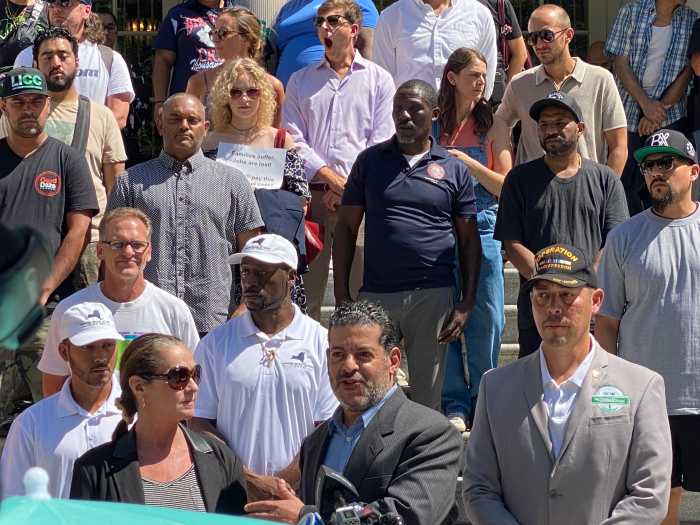Over his last nine starts, Aaron Nola has been downright masterful. He’s 5-2 with a 1.76 ERA, striking out 70 batters in 61 innings pitched. In fact, he’s been so sharp that in order to find the last time he allowed more than two earned runs in a single game, you’d have to go all the way back June 16, when he gave up five to the Diamondbacks. That lose swelled his ERA to 4.76 and dropped his record to 3-5. Since then, Nola’s ERA has dropped to 3.02 and he now has a better than .500 record at 9-7. Nola has solidified himself as the top of the rotation guy for the Phillies this season, where he’s been a beacon of hope in a very rough rotation. Nola is doing a much better job of going right after hitters and putting them in a hole from the first pitch. He’s started 241 batters this year 0-1 as opposed to allowing just 150 get ahead 1-0. And to put that into even better perspective, Nola has only gone 2-0 to 40 hitters this season, whereas he’s buried 109 down 0-2. He’s attacking the strikezone, allowing himself to get ahead and stay ahead.
But the thing about Aaron Nola is he can’t do this alone. While Nola has seemingly found his punch out pitch recently, he’s not a guy that will blow you away with a fastball or cut you down with a knee buckling breaking ball. He has good stuff, but he’s still yet to find that one pitch that he can carve up hitters like a Thanksgiving Day turkey with. Kershaw and Kluber have their curveballs. Darvish and Kimbrel have their sliders. And Hamels is still doing it with his changeup. Nola hasn’t quite found that pitch just yet. And until he does, I don’t know if I’m necessarily comfortable with him being a bonafide ace.
As the 2017 season begins to mercifully draw to a close and 2018 rolls around sooner than we think, it’s time to start taking a look at the rotation for next season and finding Aaron Nola some help at the top end of it. That help likely won’t come internally, as we’ve seen so far this year. Zach Eflin has been good since his return to the Major Leagues, but the rest of the staff has struggled. With that, the Phillies may want to consider some outside help for next season. Here are three arms the team could consider signing in free agency this offseason to bolster the top end of the rotation.
Jake Arrieta, Chicago Cubs
Let’s pull out the big guns right out of the shoot. Arrieta signed a one-year deal with Chciago this past offseason after the team won its first World Series in 108 years. Arrieta, of course, is a former Cy Young Award winner who found a rejuvenated career in Chicago after a rough start in Baltimore. In the previous two seasons, Arrieta was 40-14 with a sub-3.00 ERA in 64 starts. While 2016 wasn’t quite as kind to Arrieta as 2015 was, that was expected, as Arrieta posted a 22-6 record with a 1.77 ERA en route to his first Cy Young. This season, we’ve seen mixed results for Arrieta. The 31-year-old is 12-8 with a 3.73 ERA in 24 starts for the Cubs this year. The entirety of the team’s rotation has taken a major step back this season compared to last, and Arrieta hasn’t been able to avoid that plague. His strikeout totals are comparatively right where they belong, but what is hurting Arrieta this season is the amount of hits he’s giving up. After posting the league’s lowest hits/nine the last two seasons, that ratio has swelled to 7.9/9 this season. That goes along with his highest homeruns/nine ratio since his 2012 campaign.
Now, I’m throwing a ton of negative numbers out here, but that doesn’t mean that Arrieta is a bad pitcher or has lost his touch. Over the last ten times that Arrieta has taken the mound, he’s 5-3 and has lowered his ERA by 0.63, down to 3.73 from 4.36. It’s still not the ERA we expected from the ace, but it’s much improved.
Arrieta is going to cost a fortune in free agency this upcoming winter. It’ll also be very difficult for the Cubs to let him walk away knowing they have very young, controllable players on their roster who still won’t cost much money. The team could keep Arrieta on another short term deal, maybe one that is two years or less, before they part ways with him. But the Phillies have the cash to spend, and the team would be unwise to not make a play for the righty. He’d immediately become the top of the rotation guy, giving the Phillies the ability to push Nola back to the number two spot. The veteran Arrieta would take some pressure off the young pitching staff and be somewhat of a mentor, just as John Lackey has been for him the last two seasons.
This past season, Arrieta caught that one year deal worth $15.6 million. While his 2017 hasn’t been as productive as his previous two seasons, I’d expect him to make that or slightly more with inflated salaries this offseason. Outside of Yu Darvish, Arrieta is the best pitcher available come 2018. The Phillies may not have what Arrieta is looking for, but it’s worth it to take a shot and bolster the team’s rotation.
Tyler Chatwood, Colorado Rockies
The montra has become well known at this point. If Tyler Chatwood never had to pitch in Coors Field ever again he’d be the happiest man in the league. Unfortunately for Chatwood, exactly half of the Rockies games are played in their home ballpark. If you take a look at Chatwood’s split at home and on the road, he’s an entirely different pitcher. This season, Chatwood is 2-6 with a 6.93 ERA in Denver and 4-6 with a 3.78 ERA everywhere else. His career stats tell the same story as well. Prior to this season, the 28-year-old was 5-8 with a 5.74 ERA at home and 8-1 with a 2.18 ERA on the road. A change of scenery would do this guy wonders.
Chatwood is only making $4.4 million this season, but will be eligible to hit unrestricted free agency for the first time in his Major League career this offseason, meaning he can speak to and sign with any team he wishes. I’d be surprised if that team is Colorado, unless they offer him the best price or he truly loves living there. Chatwood may be looking for a longer term deal, and the Phillies, again, would have that kind of money. I’d bet Chatwood would want three years, around $6 million a year. That’s really nothing at all for the Phillies payroll.
The Rockies have moved Chatwood in a out of the bullpen this season to see what he’s best suited for, but with his splits, it’s apparent to me that he has the capability to be a starter in this league. He seems to be going on the same trajectory as Arrieta did in Baltimore, and moving onto Chicago was a career changer for him. The Phillies could be that career change that Chatwood needs.
Chatwood’s fastball has averaged out around 94-miles-per-hour this season, and has ticked upwards in each of his three Major League seasons. He has good stuff that simply don’t work in the ballpark he plays in. While he’d be going from one hitter’s park to another, Citizens Bank Park has one advantage to Coors Field: it’s not 5200 feet in the air. There’s a reason that the Denver Broncos stadium was once called Mile High Stadium. Balls fly out of the ballpark at an unheard of rate in Colorado, likely aiding to the 22 homeruns he’s allowed at home compared to just 13 on the road in his career. Because of the air up there, your breaking ball isn’t as sharp (and Chatwood has a good curveball). He’d be moving from the park with the most homeruns allowed to the seventh most in CBP, which could be a dramatic difference over the course of the season.
Nola likely would still be the ace of the staff if the Phillies brought in Chatwood, but the signing allows the rest of the current Phillies staff to move down a peg as Chatwood slides into the number two roles nicely.
Marco Estrada, Toronto Blue Jays
I don’t know what it is about Toronto and Pittsburgh, but they’ve got this reclamation project thing down to a sceince. Marco Estrada is just another example of a guy who’s time in the big leagues looked to be just about up when he signed with the Blue Jays in 2015. His career was trending in the wrong direction in Milwaukee after his ERA shot up over 4.30 in his final season there. Since then, however, he’s posted 27 wins while two of his last three seasons have been under 3.50 ERA campaigns.
Estrada has been somewhat of a tantalizing figure over the last three years. He led the American League in hits/nine in 2015 and 2016, but this season has allowed more than two hits more per nine innings than the previous two seasons. He’s also walking a full batter more a game than in 2015. Despite these shortcomings recently, Estrada is striking out more hitters per nine than the last two season by a large margin. Over 135.1 innings this season, Estrada has punched out 140 batters.
Estrada has come alive in his last four starts, allowing just six earned runs over 26 innings pitched. That’s a 2.08 ERA over the span. In each of his last three starts, he’s pitched exactly seven innings, which means he’s starting to get deeper into games again like he did in 2015. In fact, if you take out his horrid month of June, in which he went 0-4 in six starts with a 9.11 ERA all while allowing opposing batters to hit .353 off him, you see a pitcher with a 5-3 record and a respectable 3.76 ERA in 2017. In months not named June, batters are hitting .223, .228, ..245, and .196 respectively.
Although Estrada will be 35-years-old by the time next season is over, there isn’t a lot of wear on his tires. He’s been in the Major Leagues now for nine seasons, but only made 22 appearances in his first three seasons. Estrada isn’t a power arm by any means, as his fastball averages under 90-miles-per-hour, but he has that assortment of breaking balls I was talking about earlier that lead to quicker strikeouts and subsequent shorter innings. Estrada could be called upon to be a number one because of his experience or could slide in behind Nola in the rotation and give the Phillies a solid one,two punch.
Mandatory Credit: Derik Hamilton-USA TODAY Sports



























